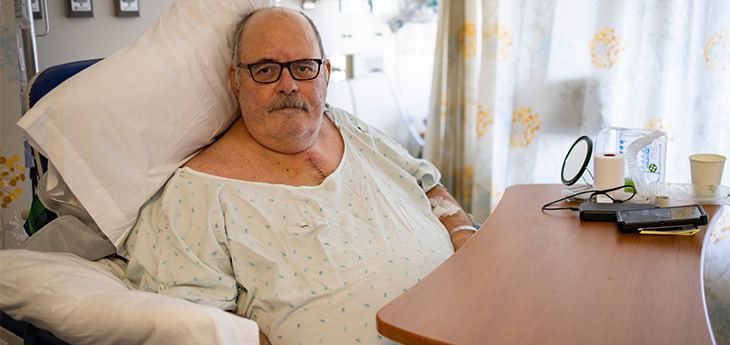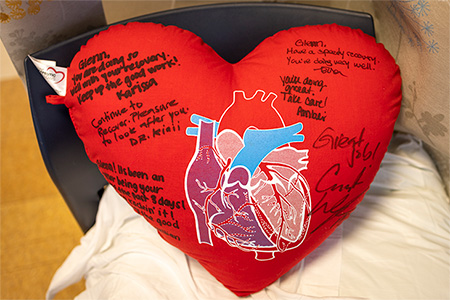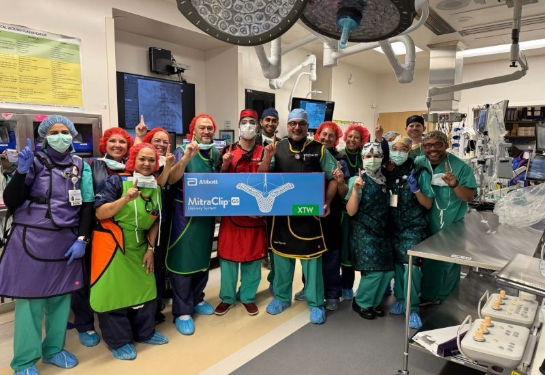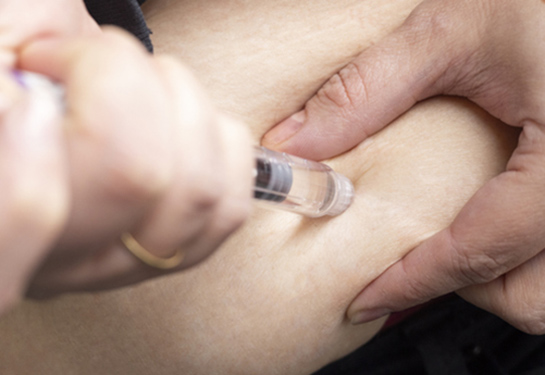‘They saved my life’: Complex aortic dissection procedure gives patient life back
The hours after he collapsed at his home are a patchwork in Glenn Moon’s mind. His recollections come and go like flashbacks of past trauma.
He has memories of driving in an ambulance, being confused and yelling for the EMT to help him because his chest felt like it was going to explode. He also remembers seeing his family sitting at his side in a hospital room.

But his most intense memory is the look on his family members’ faces when the doctors told them it might be time to start saying their goodbyes.
“I was sure pretty sure I was going to die when I saw their reaction,” Moon recalled.
Getting lifesaving care
Moon had suffered a Type A aortic dissection, which occurs when a tear develops in the layers of the ascending part of the aorta just as it branches off from the heart.
An acute aortic dissection is rare. Approximately three in 100,000 people suffer an aortic dissection each year. It is also often a lethal condition. The patient’s chances of dying is 1%–2% per hour within the first 24 hours, resulting in a mortality rate of up to 50%–74% during the acute phase. And 30% of patients die after reaching the emergency room and even after surgery.
Moon’s wife had called 911 and he was rushed to a local hospital in Stockton, California. Unfortunately for him, an acute Type A dissection is a complex surgery and none of the local hospitals could perform the procedure.
“I couldn’t believe it when they told me they were not able to do the procedure. It felt like they were just going to let me die,” Moon said.
Luckily for Moon, the hospital was able to transfer him to UC Davis Health, where surgeons were capable of performing the complex cardiac and aortic operations.
I am just so thankful UC Davis Health accepted me in transfer. They had the talent and wherewithal to perform this procedure. They saved my life.” —Glenn Moon
Type A aortic dissection procedure
Once Moon arrived at the UC Davis Medical Center, the Cardiothoracic Surgery team including Jorge Catrip, Sabrina Evans and Bob Kiaii performed the complex procedure to fix the acute Type A aortic dissection.
During the procedure, Moon was placed on cardiopulmonary bypass, which means a machine temporarily took over the function of his heart and lungs and his body temperature was lowered. This allowed the surgical team to temporarily stop his circulation and protect his heart and clear the aorta of blood, while still providing blood and oxygen to his body.
For Moon, his tear was in the ascending aorta and a surgical procedure was performed. The cardiac surgery team replaced the damaged section of the aorta with a long-lasting synthetic graft. When the replacement of the torn segment of aorta with the graft was completed, Moon's body was warmed, he was taken off bypass, his incision was closed, and he was transferred to the intensive care unit.

“This patient’s operation took all night long,” recalled Kiaii. “A Type A aortic dissection is a very challenging condition to operate on and can have lots of complications. It was a real team effort, and we are proud to be able to offer complex and innovative procedures like this to support our patients in the community.”
Thankful and recovering
Just days after his procedure, Moon sat in his hospital room recovering from his very complex surgery. A red pillow in the shape of a heart lay on his bed, signed by his doctors and nurses.
“I am just so thankful UC Davis Health accepted me in transfer,” reflected Moon. “They had the talent and wherewithal to perform this procedure. They saved my life.”
Although Moon has a long road to recovery through rest and rehab, his outlook on the future is bright.
“How could I feel bad at all? This is a lot better than when it felt like my chest was exploding,” he joked.
At that moment, one of his surgeons entered Moon’s room to check on his progress.
“There’s one of my heroes,” said Moon, pointing to the surgeon.
The surgeon smiled and shared, “It was a privilege.”




